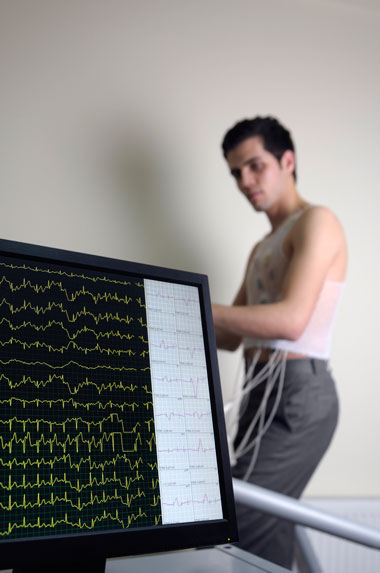Exercise Stress Test
An exercise stress test is an investigation to assess the effects of exercise on the person's heart. It is also known as a treadmill or cardio-pulmonary exercise test, with a more sophisticated variant known as an 'MVO2'. The most likely reason for performing the test is to ascertain whether chest pain experienced by the patient is from their heart or other source such as ribcage or oesophagus (reflux). It may also be performed to provide reassurance in a controlled environment that exercise is safe, or to assess exercise ability. A degree of cooperation is required from the subject so it is really only feasible in those older than about 7 years.
A 12 lead ECG is connected to the patient and the blood pressure taken. The subject then starts walking slowly on the treadmill. The speed is increased slowly and the treadmill tilted uphill to increase the effort. In an MVO2 it may be necessary to breathe into a tube during the test. The test is continued until the person is too tired or breathless to continue. This is usually 10-20 minutes after beginning but sooner if required. The ECG is continued after the test is completed until the patient has recovered.
An ECG recording of the entire test is then obtained and sent to the requesting doctor. This is examined for any abnormal electrical signals indicative of heart disease and any possible heart rhythm disturbance.
The test is a safe means of assessing exercise ability and of screening for potential heart problems. It is, however, only performed in a controlled environment under the supervision of a doctor.

